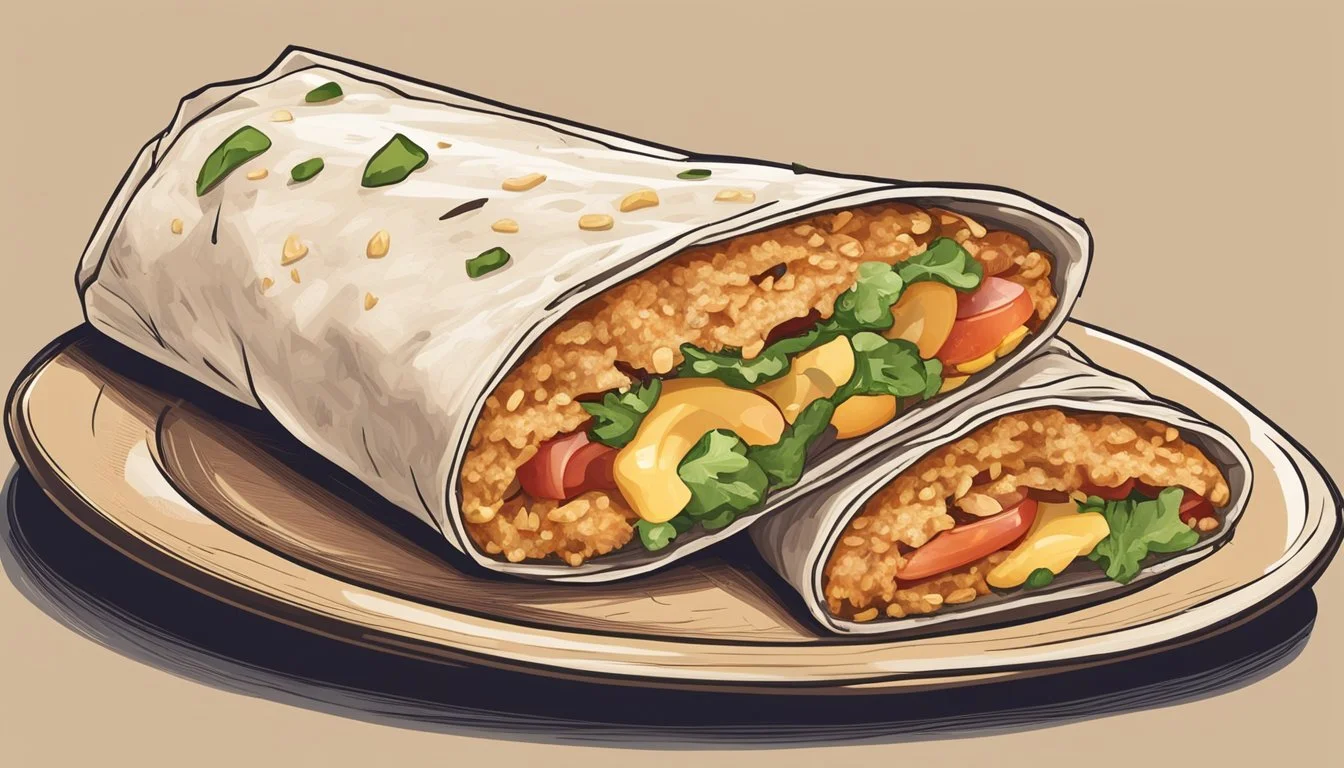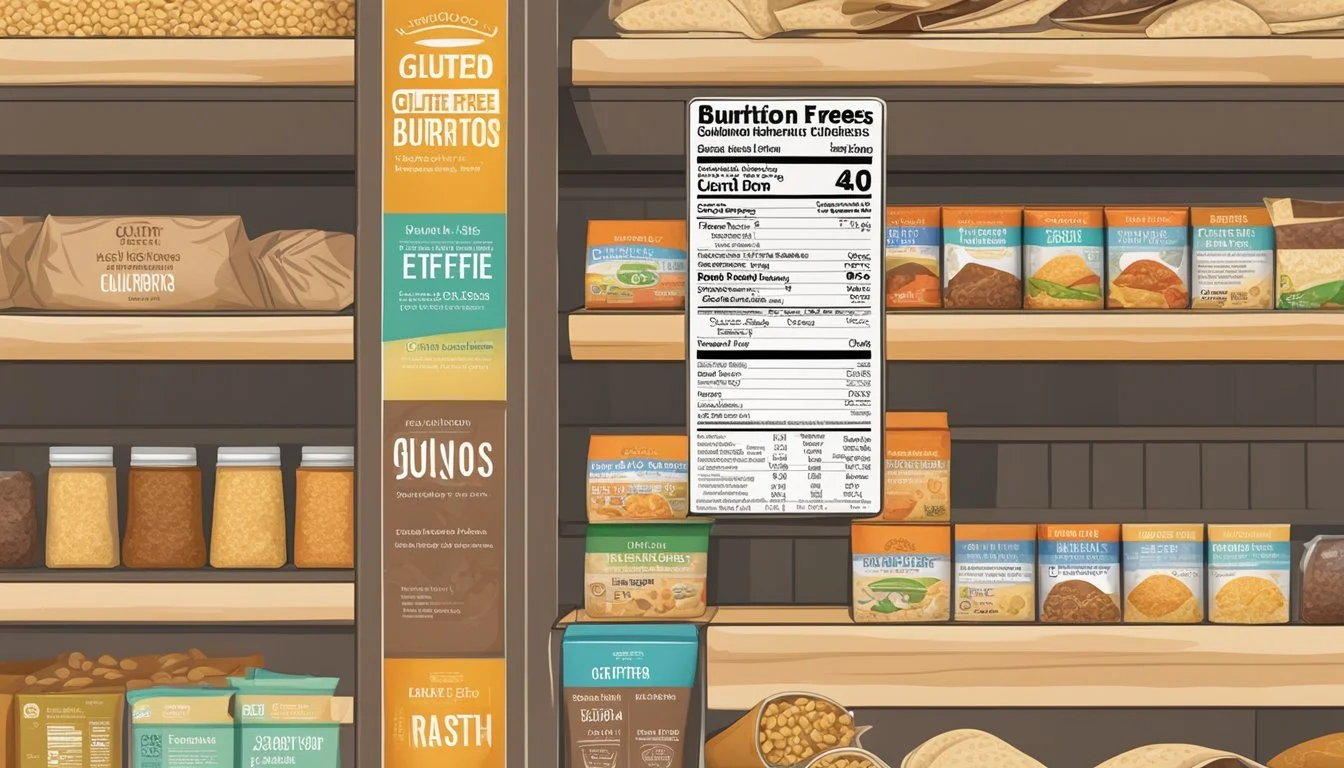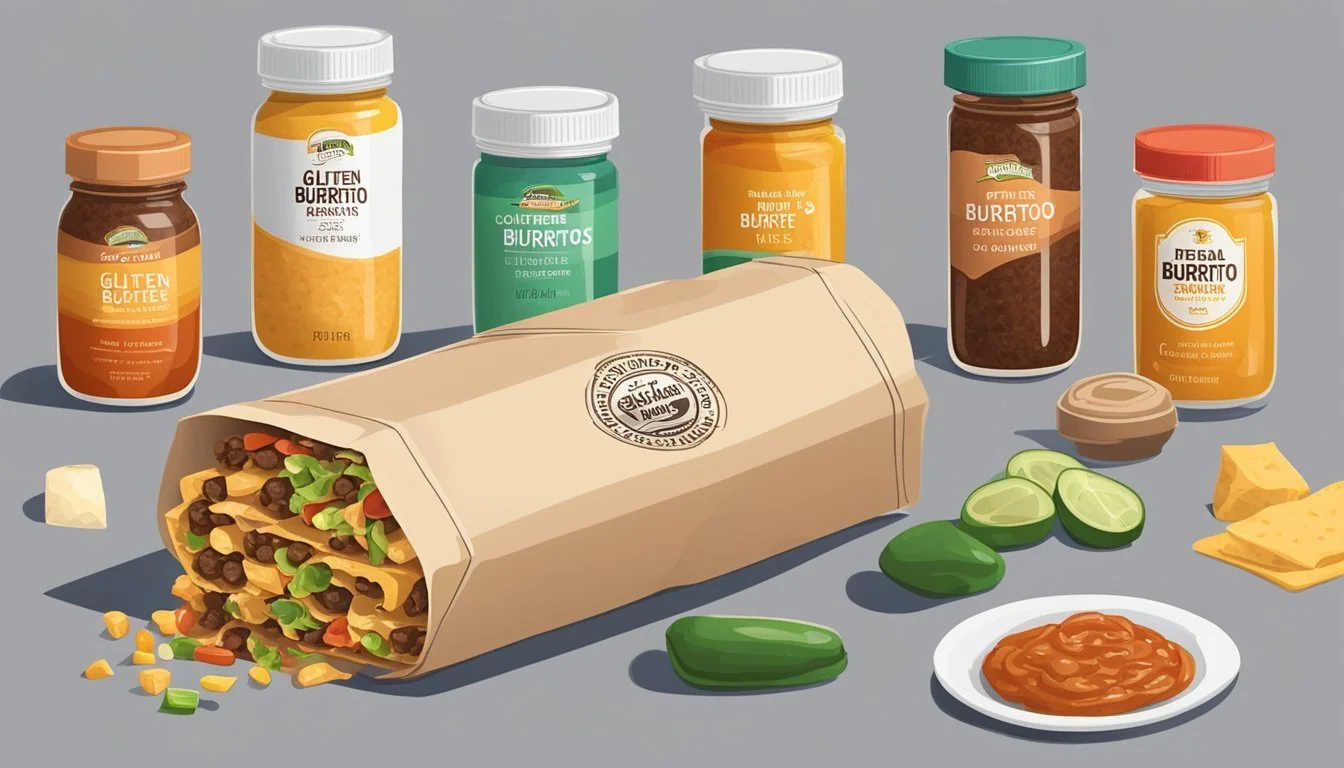How Long Do Gluten-Free Burritos Last?
Storage Tips and Shelf Life Explained
For anyone embracing a gluten-free diet, understanding how to properly store and maintain the freshness of gluten-free burritos is crucial. Gluten-free burritos, when stored in the refrigerator, typically last for about 3-4 days. The ingredients and method of storage play significant roles in preserving their quality.
Utilizing quality ingredients and proper storage techniques can extend the shelf life of gluten-free burritos. Freezing these burritos can keep them fresh for 2-3 months, making them a convenient meal option for those with a busy lifestyle. Whether store-bought or homemade, ensuring the right storage method can help maintain their taste and nutritional benefits.
Maintaining a gluten-free lifestyle often means being more mindful of food storage. Knowing how long gluten-free burritos last and the best ways to store them can help avoid waste and ensure you always have a delicious, gluten-free option ready to enjoy.
Understanding Gluten-Free Burritos
Gluten-free burritos are popular among those who avoid gluten for health reasons. The ingredients and health benefits of these burritos make them a tasty and nutritious choice.
Ingredients and Substitutes
Gluten-free burritos typically use gluten-free tortillas, which can be made from alternative grains like corn or rice. Unlike traditional flour tortillas, gluten-free options can also include ingredients like quinoa or potato flour. Corn tortillas are a popular choice, known for being naturally gluten-free.
The filling is versatile and can include protein sources such as chicken, beef, tofu, or beans. For added nutrition, veggies like bell peppers, onions, and spinach are commonly used. Cheese and salsa are popular additions, though selections such as dairy-free cheese are available for those with dairy sensitivities.
Health Benefits and Considerations
A gluten-free diet can help individuals with celiac disease or gluten sensitivities avoid adverse reactions. Gluten-free burritos offer a balanced meal with proteins, healthy fats, and essential nutrients. Using whole ingredients like lean meats and fresh vegetables boosts nutritional value.
These burritos also cater to various dietary needs. For instance, using dairy-free cheese or adjusting seasoning levels can make them suitable for lactose intolerance or low-sodium diets. Additionally, gluten-free tortillas often have a different texture and flavor compared to flour tortillas, which might be a favorable change for some people.
Focusing on fresh, high-quality ingredients ensures that gluten-free burritos remain a healthy and delicious option for everyone.
Preparation Guidelines
Proper preparation is essential to ensure that gluten-free burritos are both delicious and safe to eat. Essential steps include careful cooking techniques and thoughtful assembling of ingredients.
Cooking Techniques
Start with the filling: Use quality ingredients like scrambled eggs, hash browns, and vegetables. Cook these in a skillet with a small amount of oil until fully heated.
Use the right cooking tools: A non-stick skillet ensures even cooking and prevents sticking. Stir frequently to avoid burning and to achieve the desired consistency.
Timing is key: Eggs should be lightly whisked and cooked on medium heat. Hash browns should be pre-cooked until golden and crispy.
Add seasoning: Salt and pepper can enhance the flavor of fillings.
Heating tortillas: Warm tortillas in the microwave for about 8-10 seconds to make them easier to roll.
Assembling the Burrito
Layering: Spoon the cooked filling onto the bottom third of the tortilla. Combine scrambled eggs, hash browns, and any additional ingredients such as cheese or salsa.
Cheese placement: Sprinkle cheese over the warm fillings so it melts slightly before rolling.
Rolling technique: Fold in the sides of the tortilla, then roll from the bottom to the top to enclose the filling. This creates a tight, easy-to-eat burrito.
Storage tips: If preparing in advance, wrap burritos in aluminum foil and place them in airtight containers. This helps preserve freshness.
Freezing option: For make-ahead breakfast burritos, consider freezing. Wrap each burrito in foil, place in a zip-top bag, and freeze. Reheat in the microwave for 2 minutes or until heated through.
Proper Storage Solutions
Maintaining the freshness and safety of gluten-free burritos involves specific storage techniques. Key methods include using appropriate refrigeration practices and effective freezing and defrosting procedures.
Refrigeration Practices
Refrigerating gluten-free burritos can help maintain their quality for about 3-5 days. To store them properly, first wrap each burrito tightly in parchment paper to prevent sticking, then cover with a layer of aluminum foil.
This double wrapping helps reduce moisture loss and shield against contaminants. Mark each burrito with the date to track freshness. Additionally, store them on a shelf instead of the fridge door to preserve a consistent temperature.
Freezing and Defrosting Procedures
Freezing extends the shelf life of gluten-free burritos for up to three months. Wrap each burrito first in parchment paper and then in foil, ensuring a tight seal to prevent freezer burn.
Place wrapped burritos in a freezer-friendly Ziploc bag and remove as much air as possible before sealing. To defrost, transfer a burrito to the fridge and let it thaw overnight. For best results, reheat in an air fryer or oven until warmed through.
Reheating Techniques
For the best experience with gluten-free burritos, the method of reheating can greatly affect taste and texture. Here, we explore effective ways to heat up your burrito using a microwave, oven, or skillet.
Microwave Method
The microwave offers a quick and convenient way to reheat gluten-free burritos. First, remove any aluminum foil from the burrito. Place the burrito on a microwave-safe plate.
Cover it with a damp paper towel to ensure the tortilla remains moist. Set the microwave to medium heat and start with 1-2 minutes. Rotate the burrito halfway through to ensure even heating. Check if the burrito is heated through. If not, add additional time in 30-second increments.
For an extra touch, garnish with salsa or a dollop of dairy-free sour cream after reheating. This method is ideal for those in a rush but may result in a slightly softer texture.
Oven and Skillet Options
Using the oven or skillet offers a more traditional approach, often resulting in a crisper tortilla.
Oven Method: Preheat the oven to 350°F (175°C). Place the burrito on a baking sheet or wrap it in aluminum foil. Bake for 15-20 minutes, checking to ensure the center is hot. This method provides even heating and a delightful texture but requires more time.
Skillet Method: Heat a small amount of oil in a skillet over medium heat. Place the burrito in the skillet, pressing down with a spatula for even browning. Cook each side for 2-3 minutes, ensuring the filling is hot. This approach gives a crispy exterior and is perfect for those who can spare a few extra minutes.
Meal Prepping Tips
Meal prepping gluten-free burritos ensures you always have a quick and healthy meal option on hand. Focus on batch cooking and proper labeling for efficient storage and easy access.
Assembling in Batches
Batch cooking simplifies meal prep by allowing you to make multiple burritos simultaneously. Start by gathering all ingredients such as scrambled eggs, cooked sausage, and diced bell peppers.
Lay out tortillas and evenly distribute fillings in the center of each. Leave space for folding edges. Roll each tortilla tightly to prevent ingredients from falling out and wrap each burrito in aluminum foil for better structural integrity.
Tip: Place wrapped burritos in a gallon-size Ziploc bag before freezing to keep them organized and protected from freezer burn.
Labeling and Keeping Track
Proper labeling is essential to track your gluten-free breakfast burrito stash. Use a marker to write the preparation date on the aluminum foil of each burrito.
Example:
Label: Egg & Sausage
Date: 06/15/2024
Additionally, consider marking any special ingredients or dietary notes to avoid confusion later. Store all labeled burritos in an organized manner within your freezer, keeping similar types together for easy access.
Tip: Utilize a freezer inventory sheet to log burrito types and prep dates, which helps manage stock and ensures you're eating the oldest ones first. This prevents unnecessary waste and keeps meals fresh.
Serving Suggestions
When serving gluten-free burritos, it's essential to consider enhancing the dish with various sides, toppings, and sauces to maximize flavor. These additions can transform a simple burrito into a comprehensive meal.
Complementary Side Dishes
Fresh Fruit Salad: Pairing burritos with a seasonal fruit salad provides a light and refreshing balance. Consider mixing berries, melon, and citrus for an extra burst of flavor.
Breakfast Bowls: Serving gluten-free burritos alongside breakfast bowls filled with quinoa or rice, black beans, and roasted veggies can create a hearty and satisfying meal.
Simple Greens: A crisp green salad with leafy greens, cherry tomatoes, and cucumber offers a healthy and crunchy contrast to the rich burritos.
Hash Browns or Home Fries: These can add a crispy side that complements the soft texture of a burrito. Season them with herbs and spices for added flavor.
Corn Salad: A tangy corn salad with lime, cilantro, and red onion pairs well with the savory flavors of a burrito.
Topping and Sauce Pairings
Avocado or Guacamole: Adding avocado slices or a dollop of guacamole brings a creamy texture and a dose of healthy fats.
Sour Cream: This traditional topping adds a cool, tangy contrast to the warm and spicy burrito filling.
Hot Sauce: For those who enjoy a bit of heat, various hot sauces can be drizzled on top. Sriracha, Tabasco, or a locally sourced hot sauce all work well.
Salsa: Fresh salsa made with tomatoes, onions, cilantro, and lime juice provides a zesty and fresh topping.
Cheese and Jalapeños: A generous sprinkle of shredded cheese and jalapeño slices can add an extra layer of flavor and spiciness.
Cilantro and Lime: Garnishing with fresh cilantro and a squeeze of lime juice can brighten up the flavors and add a hint of freshness.
Nutritional Information
Gluten-free burritos offer an array of nutrients that cater to those avoiding gluten. They balance calories, protein, carbohydrates, and fiber, making them a diet-friendly and healthy option for many.
Caloric Content per Serving
Calories in gluten-free burritos can vary depending on ingredients. For instance, Amy's Gluten-Free Non-Dairy Burrito typically contains about 300-350 calories per serving. Another example is a cheddar cheese gluten-free burrito, which contains around 345 calories, 225 of which come from fats.
Packaging should always be checked for precise calorie information to ensure alignment with dietary goals. Caloric content provides a quick snapshot of energy intake from a single burrito and helps manage daily caloric limits.
Macronutrient Breakdown
A balanced macronutrient profile is crucial in gluten-free burritos. Typical macronutrient values may include:
Protein: Gluten-free burritos can contain around 7-10 grams of protein. The exact amount often depends on fillings such as beans, tofu, or eggs.
Carbohydrates: They usually have 27-40 grams of carbs, providing energy for daily activities. Fiber content, derived from vegetables and beans, can range from 3-6 grams, aiding in digestion.
Fats: Total fat content can range from 10 to 25 grams. This includes healthy fats from ingredients like avocado or cheese.
These macronutrients play significant roles in a balanced diet, making gluten-free burritos a nutritious choice without gluten. Using varied ingredients ensures a well-rounded meal while catering to dietary preferences and nutritional needs.
Frequently Recommended Products
When considering the longevity of gluten-free burritos, selecting high-quality ingredients and tools enhances the overall storage and reheating process. Below are recommended products to ensure the best results.
Preferred Tortilla Brands
Choosing the right tortilla is crucial for gluten-free burritos. Brands like Mission provide gluten-free tortillas that are both flexible and sturdy, ideal for rolling and filling. Another standout is Siete Foods, known for their grain-free options, offering variations like almond flour tortillas.
Udi’s is another reliable brand, offering tortillas that hold up well to both freezing and reheating. These brands frequently receive positive reviews for taste and texture. Purchasing from trusted sources such as Amazon can provide additional convenience and access to customer reviews.
Essential Cooking Tools
To prepare and store gluten-free burritos effectively, quality kitchenware is essential. Non-stick pans are recommended for cooking fillings evenly without sticking, while silicone spatulas prevent tearing the delicate tortillas.
For storage, airtight containers from brands like Rubbermaid help maintain freshness in the fridge or freezer. Aluminum foil is useful for wrapping burritos before placing them into gallon-sized Ziploc bags, which prevents freezer burn and helps in reheating evenly.
Investing in these tools guarantees a smooth experience from preparation to consumption, ensuring the gluten-free burritos remain delicious and safe for consumption over several days.










